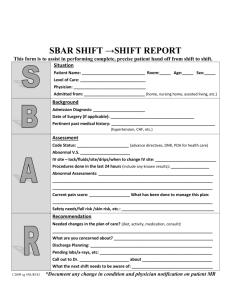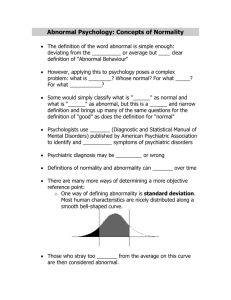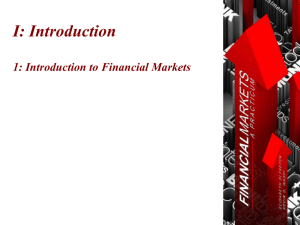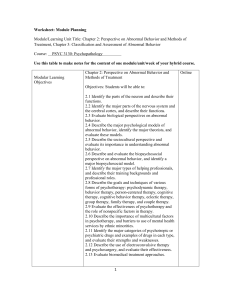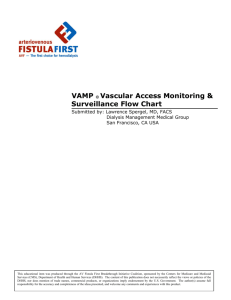eres2012_007.content
advertisement
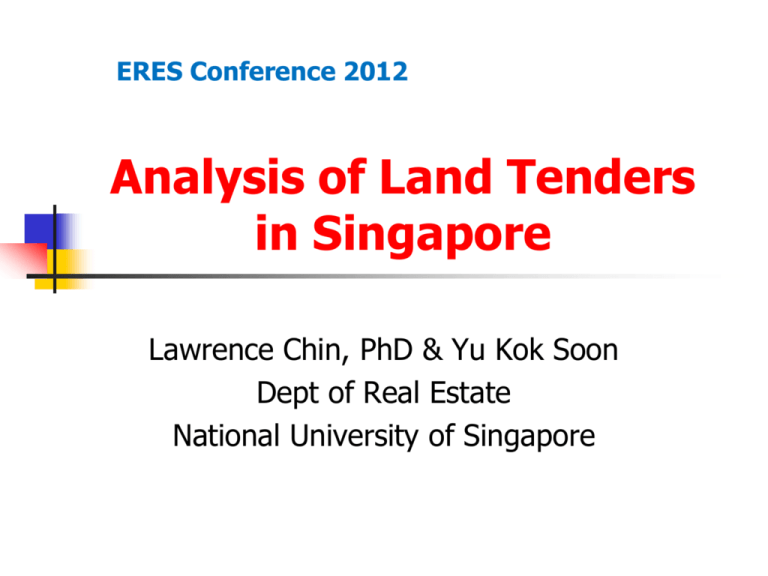
ERES Conference 2012 Analysis of Land Tenders in Singapore Lawrence Chin, PhD & Yu Kok Soon Dept of Real Estate National University of Singapore Outline Introduction Objectives of paper Literature review Research methods Findings of study Conclusion SINGAPORE: Size and Skyline Introduction About 90% of the land in Singapore is owned by the government and one major source of land supply for real estate developers is through the government land sale (GLS) programme. The release of land by the government is made in a steady manner so as to ensure that the needs of the society like housing, commercial and industrial development are adequately met. Land parcels under the GLS programme are typically sold on a leasehold tenure of 99 years. Motivation Land acquisitions made by the listed firms will directly affect their shareholder’s wealth. The response of the shareholders on the successful land acquisitions can be observed through the movement of the stock prices when the announcements are made. Objective Objective of this paper is to examine the market reaction following the announcements of successful land tender bids by property companies listed on the Singapore Stocks Exchange (SGX) using the event study methodology. Study also seeks to understand the factors that explain for the existence of the abnormal return, if any arises. Past Works Glascock et al. (1991) found that firms that engaged in acquisition of real estate assets do not experience positive abnormal return. This means that there is no value enhancement for the buyers as most, if not all of the wealth that exists will be effectively captured by the sellers. It would be expected that in a competitive land market, there will be little or no significant wealth effects that will be enjoyed by the successful tenderers upon the announcement of the land tender win Past Works These findings differ because of the different sampling of firms selected for their studies. Allen and Sirmans (1987) and Hite et al. (1984) used a sample which focused primarily on property firms, while Glascock et al. (1991) studied the acquisition and disposal of real estate assets by non-property firms from year 1981 to 1986. Past Works In an earlier study on government land sale programme in Singapore, Ooi and Sirmans (2004) use a unique set of public auction data. Their analysis shows that there exist positive excess returns associated with the announcements of successful land acquisition. This paper differs from Ooi and Sirmans (2004) as it considers a timelier window period and the impact of a series of different important events which have affected the real estate market in Singapore. During the study period of this paper, there is a recent increase of inflow foreign companies which participated in Singapore’s government land sale tenders, as well as the onset of the global financial crisis in 2007. Research Method The sample selection process began with the compilation of the data pertaining to the events of GLS tender announcements. The information such as the government agency responsible for the sale of the site, date of tender launch, date of closing and date of the award were collected along with the relevant site information and name of the successful tenderers were also taken down. Next, a background study of the winning tenderers was conducted to identify the true identity of the bidder. This is because the GLS programme requires the bidding companies to submit their bids through separate company. The parent companies are then categorized into either private or public listed corporations after the verification. Data Collection The raw data collection resulted in finding 138 development sites sold during the period between 2003 and 2010. The total selling price of the development sites amounted to SGD $28.25 billion. Land sales for places of worship, heavy vehicle parks, petrol stations, car showrooms, and nursing homes were excluded from the study as the small sale prices are unlikely to have any significant impact on the stock prices of the winning companies. After the data filtration, the final sample size is reduced to 46 bidding events. Of these events, 35 sites were designated for private residential development, 6 for commercial development, 4 for industrial development and 1 is designated as white site development The total value of the final sample of 46 sites is SGD $10.56 billion which constituted about 38 percent of the total GLS sales. As the sample sale value constituted quite a significant proportion of the total selling price, it is taken that the study sample is sufficiently large to be a representative of the GLS auction bidding behavior. Table .1: Development Sites Sold by URA and HDB through GLS Program from 2003 to 2010 Year No. of Development Sites Sold Sale Price SGD millions URA HDB Total 2003 3 0 3 $447.68 2004 2 1 3 $112.10 2005 8 2 10 $2,184.32 2006 11 1 12 $1,925.39 2007 27 8 35 $9,232.44 2008 16 5 21 $3,084.57 2009 9 3 12 $1,743.82 2010 22 20 42 $9,521.32 Total 98 40 138 $28,251.65 Event Study Methodology This paper adopted the methodology developed by Fama, Fisher, Jensen and Roll (1969) called event study methodology in investigating the effect of announcement of land tender win on the stock prices of winning companies. The data on the stock prices of these companies before and after the announcements will be gathered and analyzed. The change in stock prices that is beyond expectation, abnormal return, during the event window will be noted and will be attributed to the effects of the event. The event will be said to have an impact on the stock price of the companies if there is a significant abnormal return found during the event window. Window Period The first step in carrying out the event study is to decide on the event of interest which in this case is the announcement of the land tender win, and also the window period to carry out the examination of the security prices of the winning firms. The window period selected is similar to that in Ooi and Sirmans (2004) where an estimation window of -100 days to +30 trading days was employed. As shown in Figure 1, abnormal returns are examined over a window of five consecutive trading days around the event (-1, 0, +1, +2, +3 days) with the closing date of the land auction designated as day 0. Announcement Effects of Successful Bids As shown in Table 3, the highest abnormal return was achieved on day +1, in which the gain recorded was 0.780 percent and is found to be statistically significant using the J statistic at a 2 percent significant level or higher. On the average, the gains recorded for day -1 is -0.272 percent, -0.163 percent on the event day, +0.433 percent on day +2 and 0.035 percent on day +3. However, the abnormal returns for the day -1, 0, +2 and +3 were found to be poorly significant. The mean cumulative average abnormal return (CAR) for window period (0, +3) was given as 1.015 percent. The highest incidence of positive abnormal returns occurred on day +1 at 56.5 percent with the second highest incidence of positive abnormal returns registered on day +2 at 54.3 percent In sum…. The winning bidders for the GLS sites reaped positive abnormal returns. Although the effect of these returns occurred on day +1 and day +2, the overall return is found to be +0.743 percent. This suggests that the winning tenderers were bidding in a fashion that enabled them to capture the wealth effects and also is able to avoid the ill effects of excessively high bids resulting in the winner’s curse. Multivariate Regression Analysis A multivariate regression model (MVRM) is applied to the cumulative abnormal return (CAR) to help investigate the possible explanatory factors for the existence of the abnormal return. As the announcement effect may spread out over a long period of time, it more suitable to use the CAR as an indicator of the existence of abnormal return. Findings As shown in Table 5, the first explanatory variable shows a negative sign which implies that companies that have real estate as their core business produced a negative abnormal return as compared to those which are non-real estate focus. This finding differs from that in Ooi and Sirmans (2004), which yielded a positive result for property-focused companies. It appears that the focus of the company’s business is not as important as the track record and experience of the company. For example, some multi-industry firms like Tuan Sing Holdings and Guthrie GTS Limited are involved in several types of business activities, but they also managed to achieve high returns in property development. Limitations Overall, the regression model has an R-square value of 0.244, which is not a strong fit as this indicates that only 24.4% of the changes in the abnormal return on D+1 are explained by the set of chosen explanatory variables. All the coefficients are also found to be insignificant. Hence, there could other significant determinants which are not included in the model. They should be identified in further studies and included for analysis. CONCLUSIONS Property firms need land to carry out their primary activities. It is thus expected that land acquisitions made by these firms will directly affect their shareholder’s wealth. The response of the shareholders on the successful land acquisitions can be observed through the movement of the stock prices when the announcements are made. Event study provides a useful tool to measure the effects of an economic event on the value of the firms. This research methodology exploit the fact, given rationality in the marketplace, the effects of an event will be reflected immediately in stock prices. Thank you!

